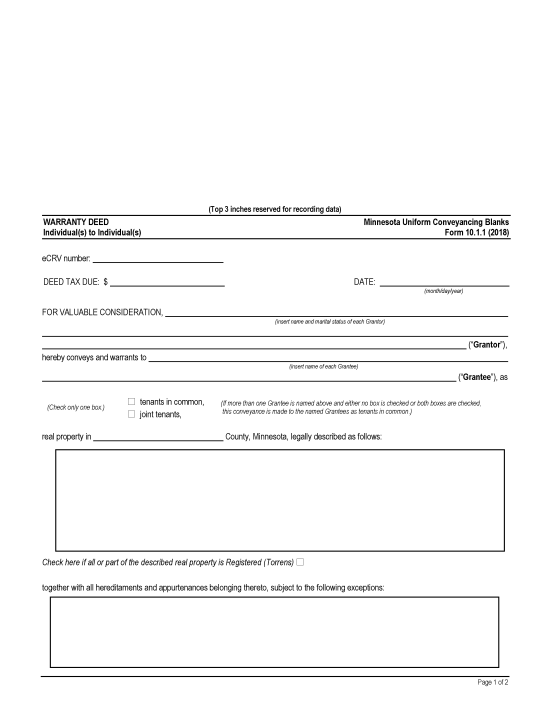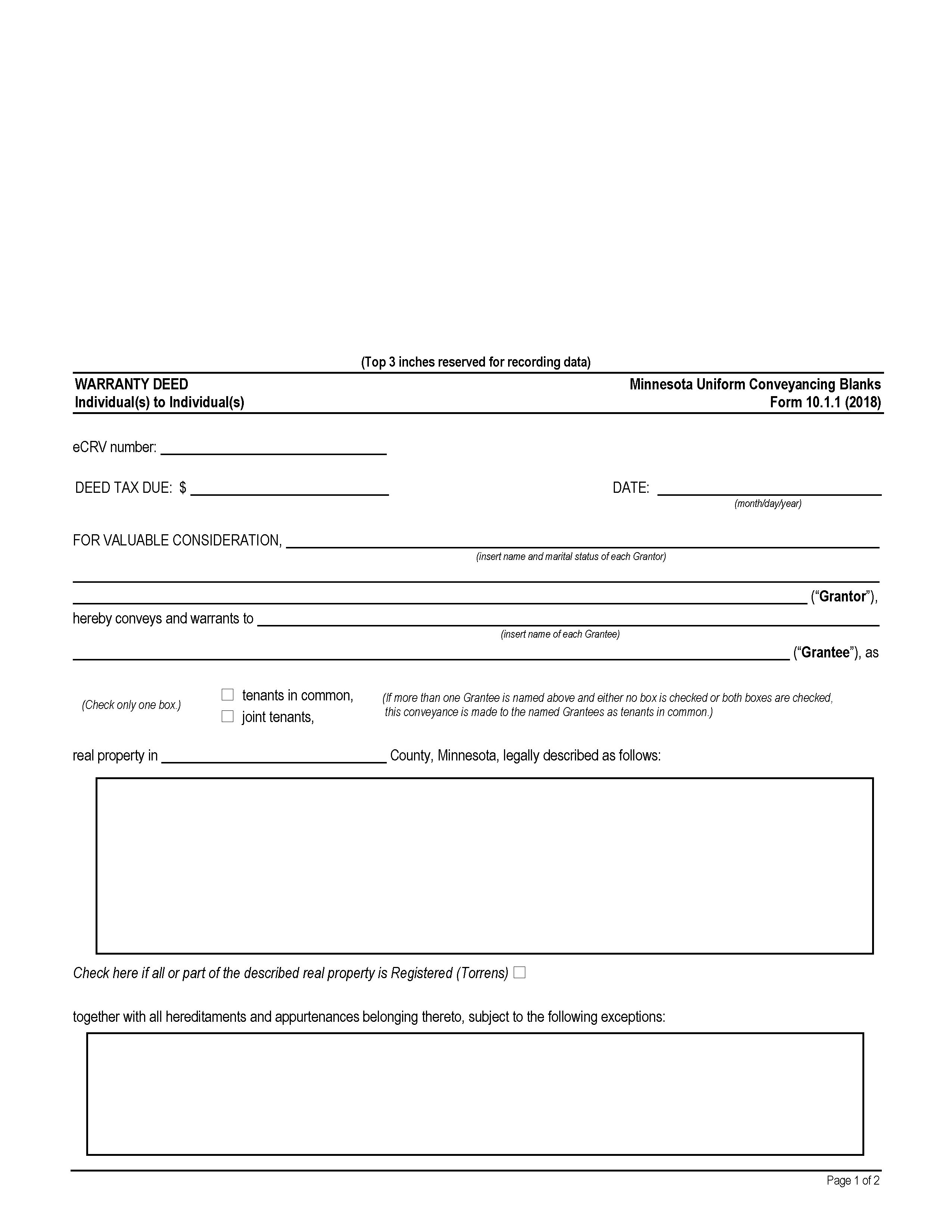How to Format
Layout
- The deed must have a 3″ space at the top of the first page and at least 0.5″ for every other side and page.
- The font must be at least 8pt and in black ink.
- Paper must be white, at least 20-pound weight, and no bigger than 8.5″ x 14″.[1]
Signatures
The grantor (the seller) must sign the warranty deed and have their signature notarized.[2]
Recording
The deed must be submitted to the County Recorder/Registrar of Titles in the county where the property is located.[3] The fee to record the deed is $46 as of this writing.[4]
Electronic Certificate of Real Estate Value (eCRV) – If the purchase price of the property exceeds $3,000, this certificate must be submitted online before recording the deed.[5]
Well Disclosure Certificate – Must be filed if there are one or more wells on the property (unless there is no change since the certificate was previously filed). It may be filed online.[6]

